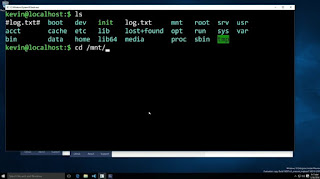Technology: How to see your heart on the screen of a mobile - TechnoTron
Posted by: TechnoTron 03/03/2017
"An 'intelligent' ultrasound arrives in Europe that connects with the 'smartphone' or the tablet"
The stethoscope was invented to address the moral challenge of Puritan Europe at a time when doctors had to press the ear on the chest of patients, whether men or women, to diagnose heart or lung disease. Just 200 years later, doctors in Europe and the United States will be able to remove the devices that, along with the white coat, are part of their visual identity. The Department of Cardiology of the Hospital Ramón y Cajal presents this Thursday in Madrid an "intelligent stethoscope", that is to say, an ultrasound device that fits in a pocket and that connects to an app in the mobile or the tablet and shows all the information Of the patient.
The device, which arrives in Europe after being approved by the US Food and Drug Administration (FDA), generates large, color-coded images of how blood flows through the arteries and How the heart valves open and close. An arrhythmia of only a fraction of a second does not go unnoticed by the device. "It's like having your heart in the palm of your hands," summarizes José Luis Zamorano, Ramon y Cajal's chief of cardiology department, while demonstrating with his sonographer in his office.
The technology allows simplification of diagnoses and increases the effectiveness of urgent interventions, such as a stroke or a car accident: the patient would not have to wait to be transferred to an ambulance or to the hospital to be evaluated in detail Cardiac picture A nurse could see the images in the app and send them to an expert. For Zamorano, it is a revolution in medicine analogous to what sound made in cinema. "It is the future of medical work, and in a short time there will be as many devices as there are professionals in health centers," says the cardiologist, who has closely followed the development process of the device manufactured by Philips.
In 2015, the smart medical device company Eko Devices took the first step in the attempt to modernize the medical tool. The company patented the Eko Core, a sensor that is inserted into the traditional stethoscope tube and generates digital records of patients' heartbeats using Bluetooth technology. Recordings are transmitted wirelessly to a smartphone application and to a web portal. Zamorano believes that these innovations not only boost medicine, but also satisfy a 21st century demand: "Society demands to see everything and people want to have more and more control over their health," he says.
The globalization of health
In the age of digital medicine, technology can help bridge the gap between rich and poor countries. Mobile applications to diagnose skin problems, study eye diseases or combat malaria are already being used effectively in areas with few health resources. Device manufacturers - who say it is a low-cost device, though not revealing the exact value - are betting that the ultrasound also reaches the developing nations. But for that, according to Zamorano, it is necessary to educate future nurses, doctors and hospital technicians in a digital context. "Universities have to teach students to analyze the heart and the whole human body on the screen of a mobile," says the cardiologist. Everything seems to indicate that the globalization of health goes around.

Comments
Post a Comment